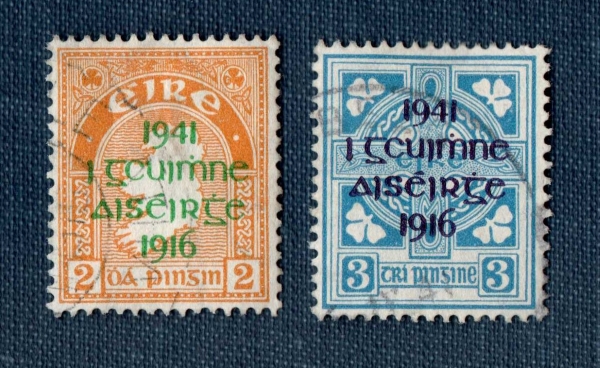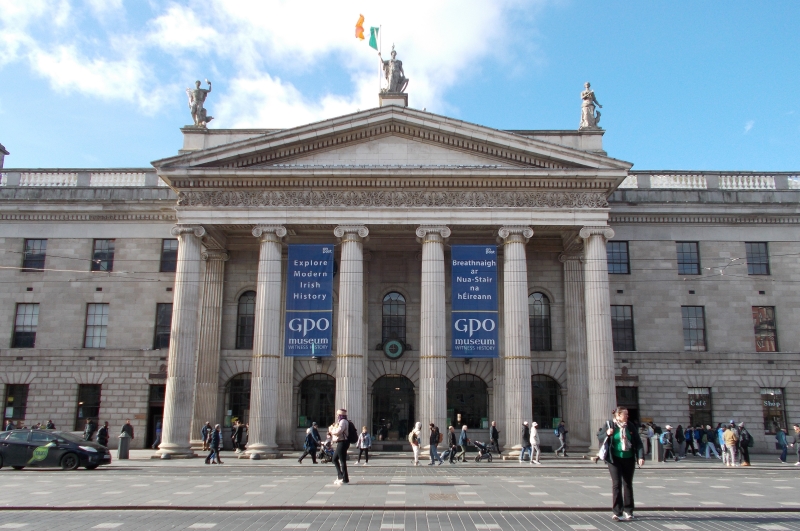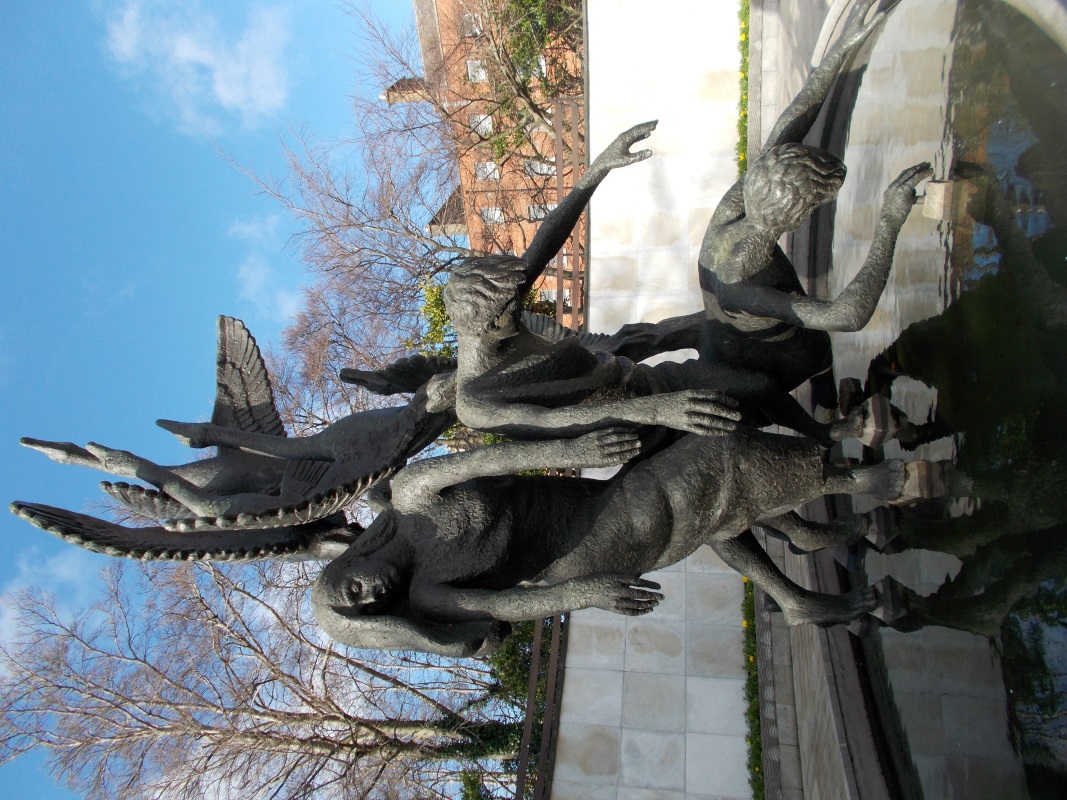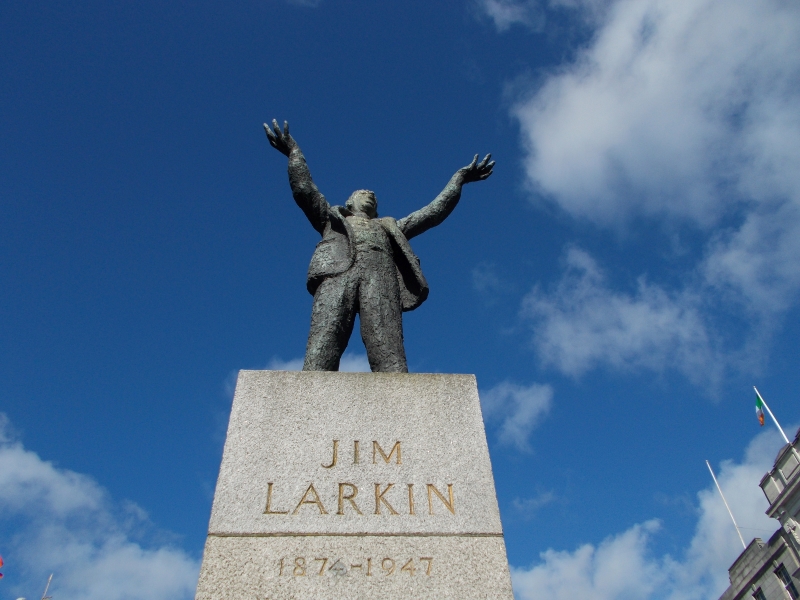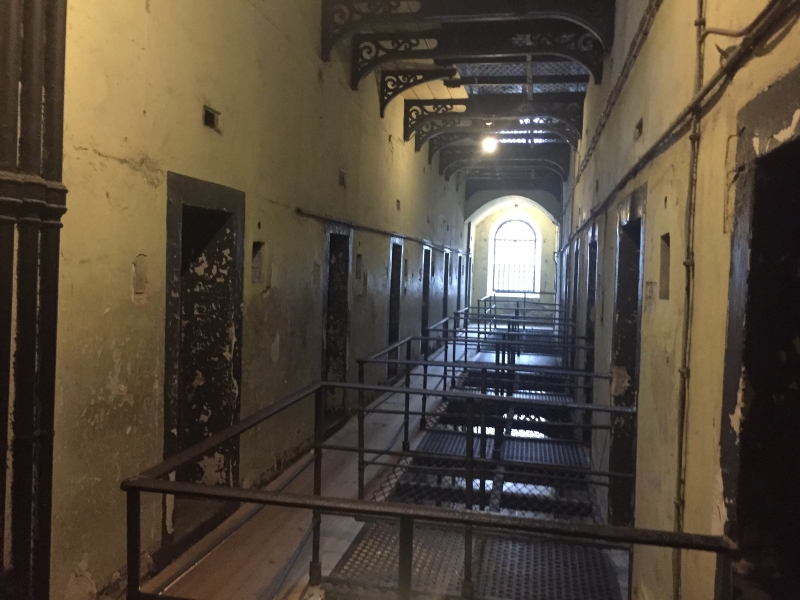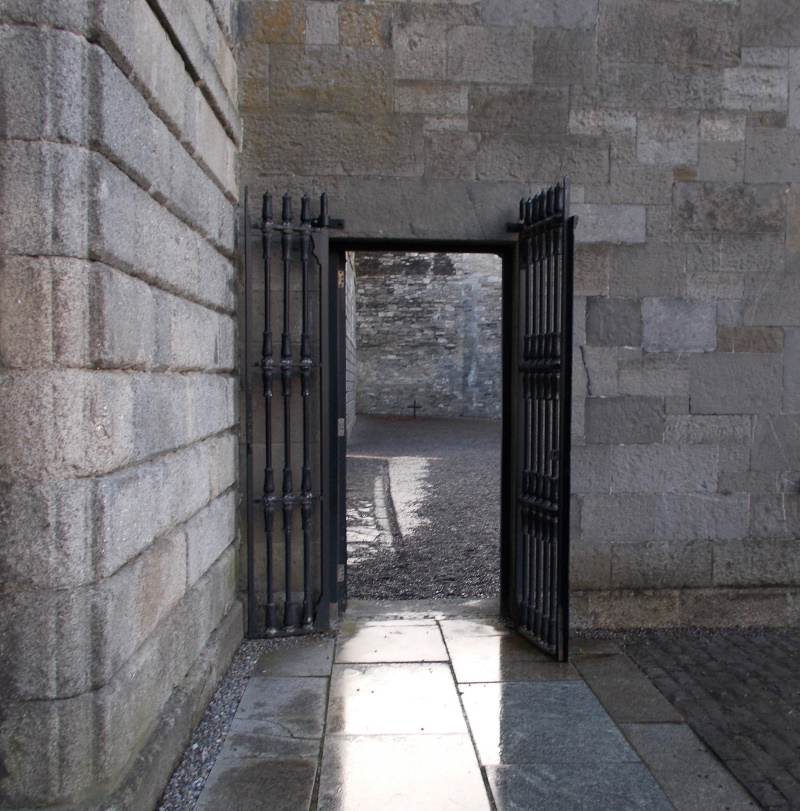I thought I'd share the stamps that the Irish An Post published in 2016 to commemorate the 1916 rising.
Having now read the A111 chapter 'Remembering and forgetting in Ireland' I think there were some really interesting choices made about what was 'remembered' (I wonder a bit about what was still 'forgotten', perhaps the impact on Unionists, the link with Germany?). The stamps came grouped into four themed sets
Leaders and Icons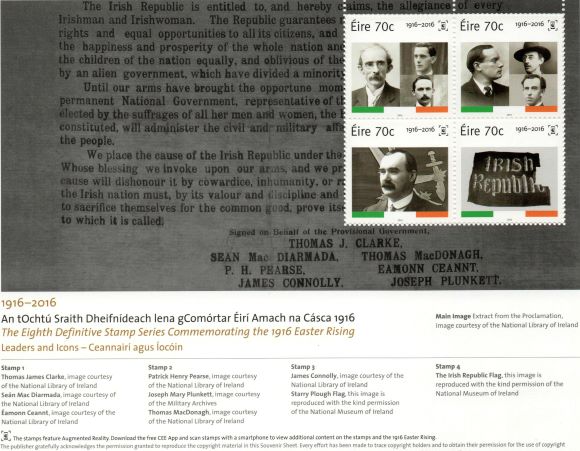
The leaders are grouped to represent the three organisations involved in the Rising, the IRB, the IVF and the ICA and there are a couple of the flags flown over the occupied buildings. This set is similar to the stamps published in 1966 - the seven executed signatories to the proclamation of independence.

Participants
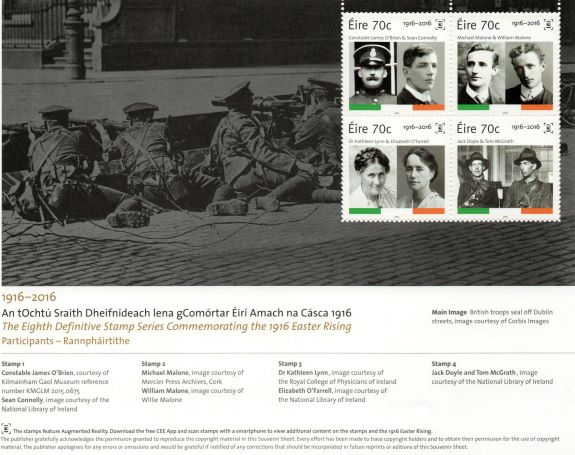
These were a very interesting set of choices, the Dublin police constable was the first person killed in the uprising by Sean Connelly who himself died in the Rising, Michael Malone was an IVF member who died in the Rising his brother William had died the year before on the Western Front, Dr Lynn and Elizabeth O'Farrell were a doctor and nurse respectively who were active Nationalists and provided medical care to the rebels, the picture of Jack Doyle and Tom McGrath is one of very few taken inside the GPO during the week
Easter Week
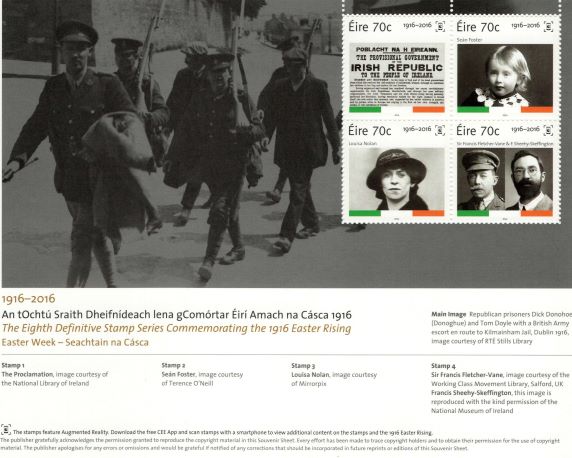
More interesting choices...Seán Foster was among the 40 children who died in the Rising, Louisa Nolan received a medal from George V for tending to British wounded, Sir Francis Fletcher-Vane was a British officer who exposed the murder of the pacifist Francis Sheehy-Skeffington and four others by another British officer (there was an attempted cover-up, Fletcher-Vane was relieved of his command but had the political contacts to get the perpetrator convicted)
The Aftermath
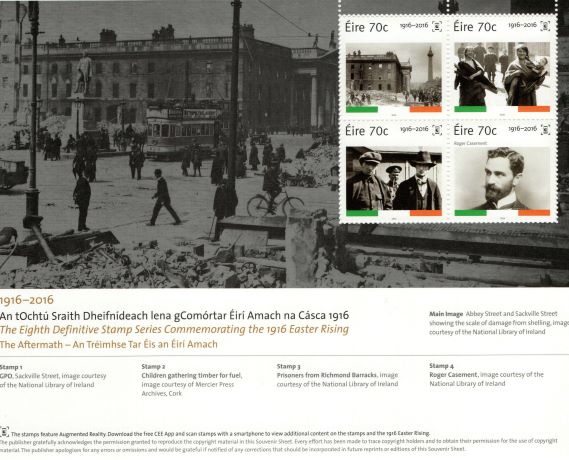
Images of the destruction in Dublin, of poor Dubliners scavenging for fire-wood, the repression and round-ups of the public that contributed to a change in public perception and Roger Casement who was the last leader executed having been caught soon after smuggling in arms for the rebellion from Germany.
An Post credit two historians for their contributions to the development of the stamps, Fearghal McGarry and Lar Joye
I don't think many of these stamps, other than the first four, could possibly have been printed in 1966, I found them a really fascinating set now I've learned so much more about public memories!
---------------------------------------------------------------------------------------
According to Mark McCarthy in his 2012 review of 1916 remembrance (Ireland's 1916 Rising: explorations of history-making, commemoration & heritage in modern times. Farnham: Ashgate.), 'much of the substance of the 90th anniversary commemoration was about recovering lost memories of the revolutionary past. In what seemed like a public relations exercise of grandiose proportions, Easter 2006 was all about recasting the Rising in a new positive light and sanitising its legacy from all of the negative connotations associated with the actions of the Provisional IRA during the course of the Troubles.'
The Taoiseach, Bertie Ahern, had played a key role in the negotiation of the 1998 Good Friday Agreement and according to McCarthy 'saw the 90th anniversary as an opportune time in which to reassert Fianna Fáil’s republican credentials and reclaim the Rising’s legacy from the Provisional IRA.'
The first military parade since 1971 to celebrate the 1916 Rising was seen in central Dublin and the scale of celebrations exceeded anything that had occurred during the Troubles.
The commemorative stamp was a simple photograph of a recently cleaned and refurbished GPO building and to my mind is the most 'neutral' of all the stamp designs memorialising the Rising. There are no images of conflict or visual references to the rebels themselves - it certainly does look like a 'sanitised' legacy.
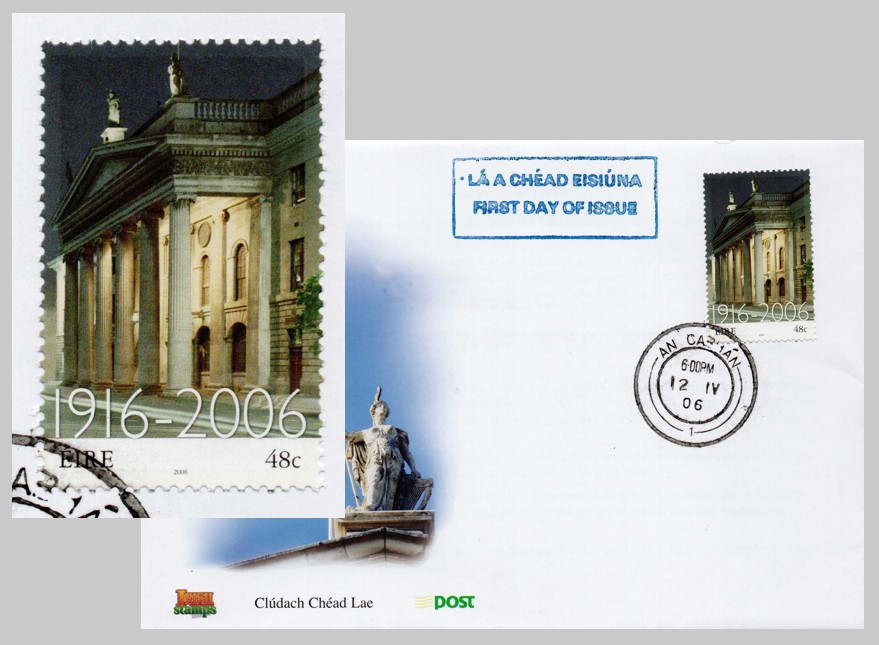
---------------------------------------------------------------------------------------
In 1991, the 75th anniversary of the Rising, the commemorative stamp was a combined image of the Cúchulainn statue which stands in the GPO building as a memorial to the Rising and the text of the Proclamation of Independence. The Irish text on the side of the stamp translates as 'in memory 1916'. The other image on the first day cover is a statue of Hibernia which stands above the pediment on the building.
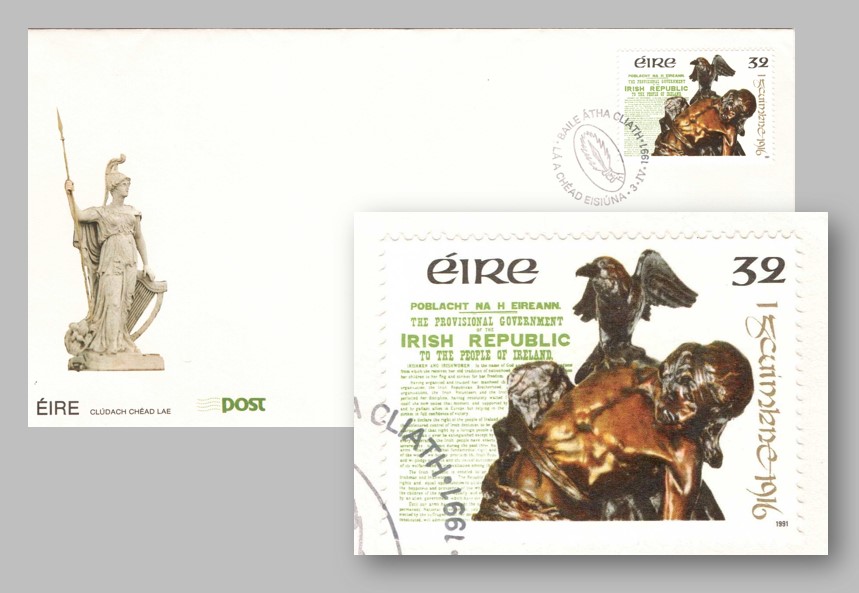
The original statue 'The death of Cúchulainn' was made in 1911-12 by the sculptor Oliver Sheppard and chosen by Éamon de Valera in 1935 as the 20th anniversary approached to be a monument to the Rising. Though mortally wounded by his rival Lugaid, Cúchulainn has himself tied to a standing stone to face his enemies upright in death. Only when a raven lands on his shoulder do his opponents know he has died.
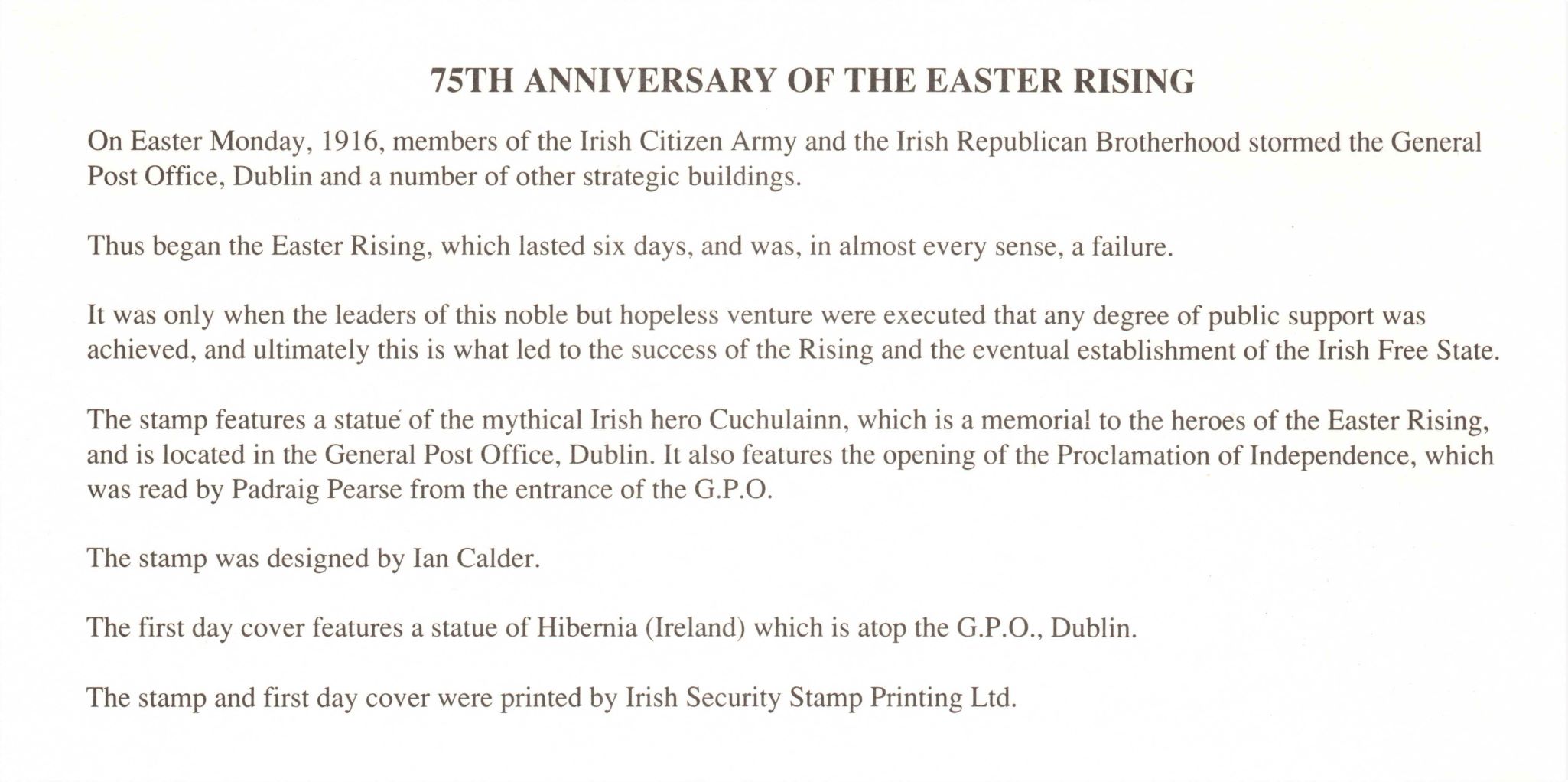
The 1935 memorial also includes part of 1916 Proclamation, but Allison Martin (https://www.historyireland.com/easter-rising-commemorations-in-the-early-irish-state/) makes the point that only a section is included. The failure to include the section on expectations for religious and civil liberty and equal opportunities for all its citizens may reflect a nervousness on the part of the government that the social ambitions of the rebels had not yet been achieved.
When this stamp was issued in 1991 the 'Troubles' were ongoing, the 'Birmingham Six' had been released from prison in England a fortnight earlier, regular sectarian killings occurred in the weeks surrounding the anniversary. The text that accompanied the first day cover reads as quite constrained in its description of the Rising, 'a noble but hopeless venture', 'in almost every sense, a failure.'
---------------------------------------------------------------------------------------
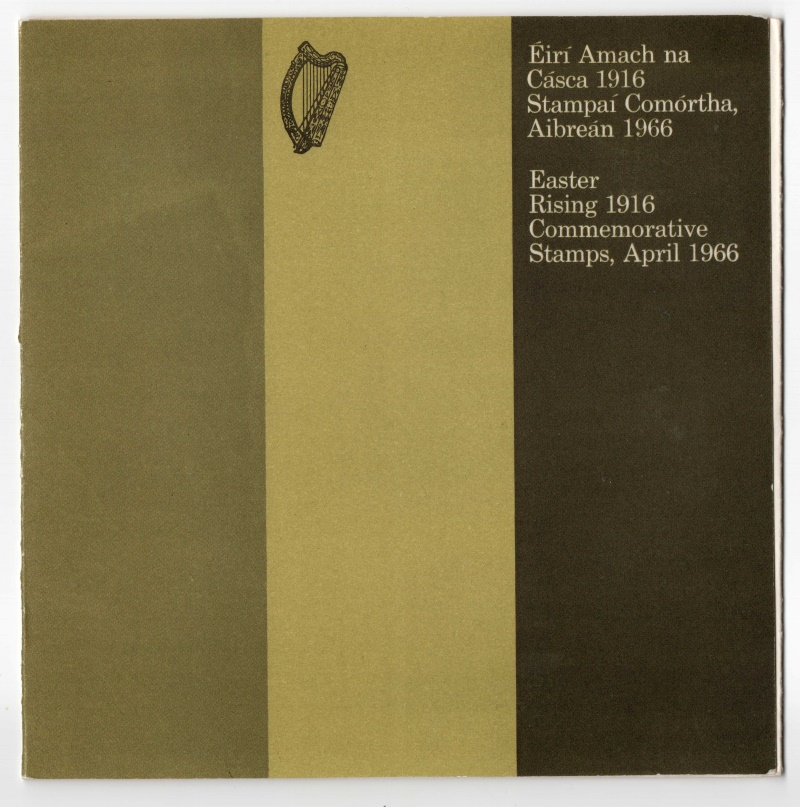
The 1966 commemorative stamps could be saved in this special display leaflet, there were eight stamps in total. Seven stamps commemorate the signatories to the proclamation, each is given a brief potted history, particularly highlighting their role in the Rising. The date of execution is given for each.
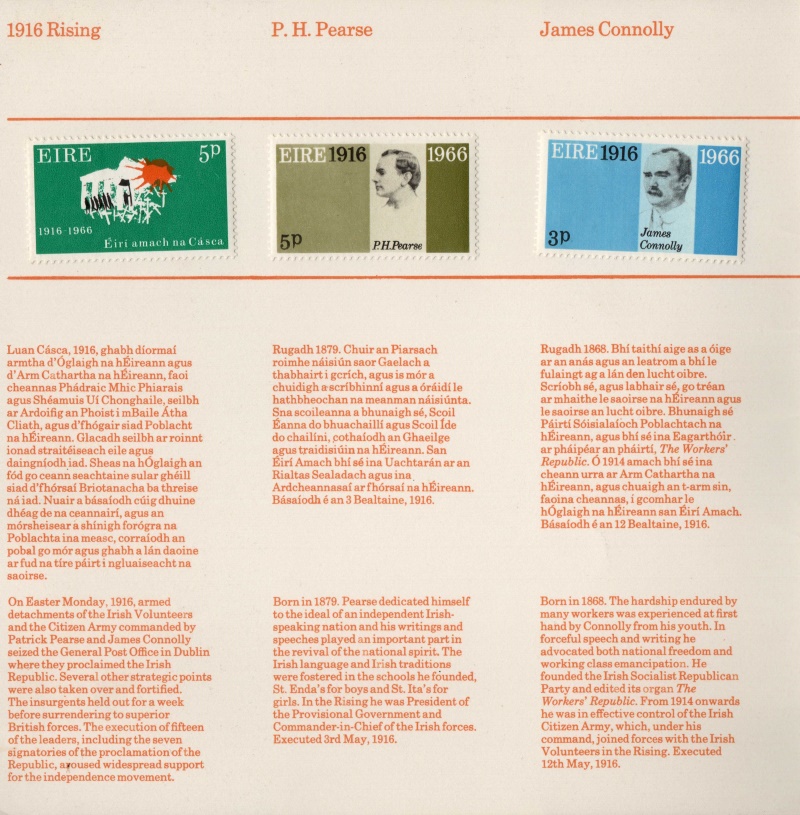
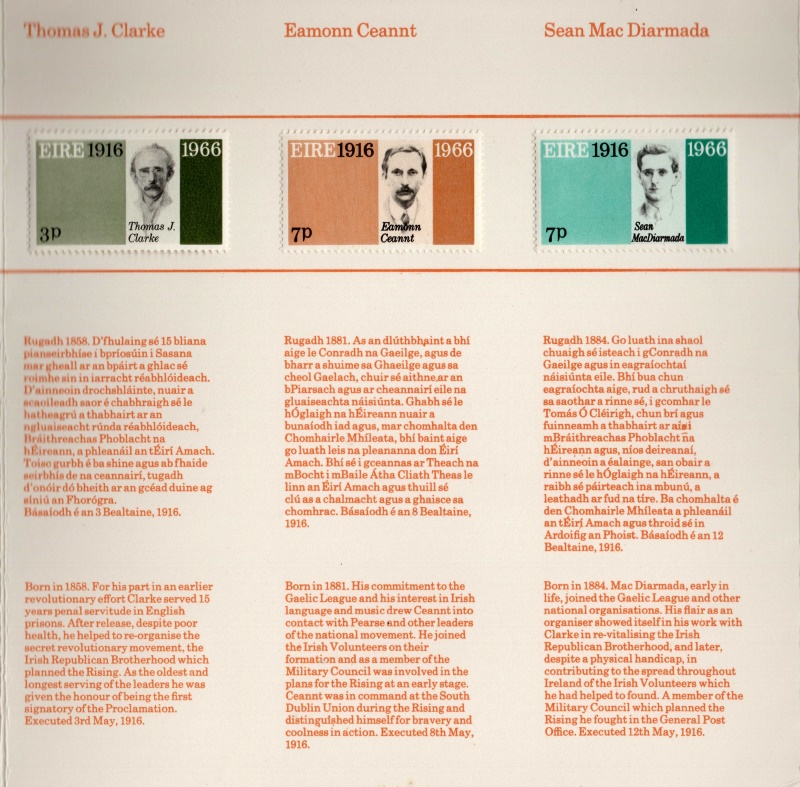
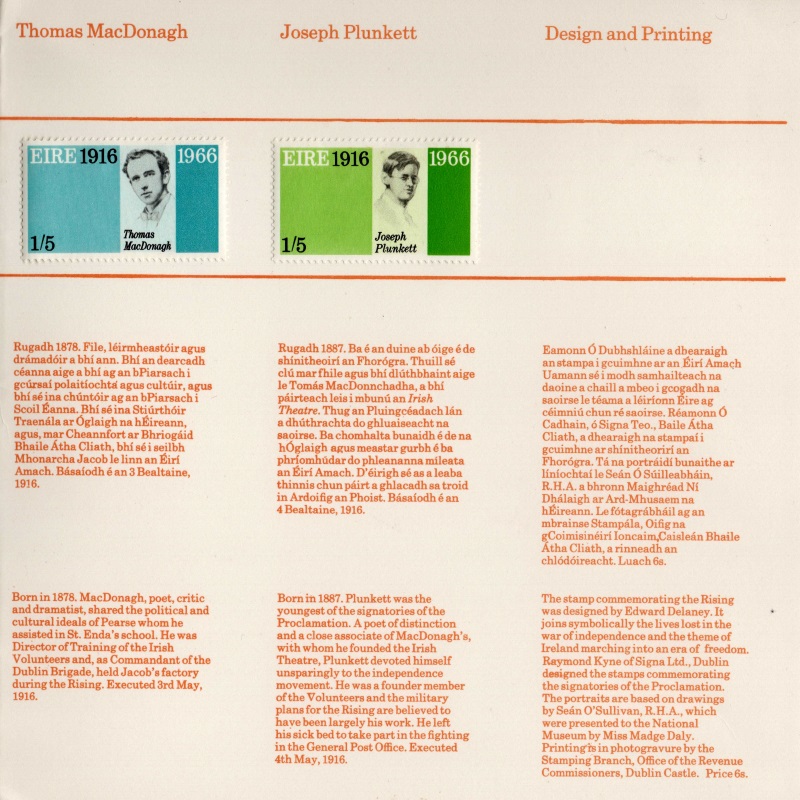
I think the stamp commemorating the Rising itself is perhaps the most interesting. The text says it 'joins symbolically the lives lost in the war of independence and the theme of Ireland marching into an era of freedom'. The stamp uses the three colours of the Irish flag and I think the sunburst is probably a reference to the Fianna in Irish mythology, the Irish text simply commemorates 'The Easter Rising'. The stamp design was by the Irish artist Edward Delaney, who is best known for his sculpture, including major memorials in Dublin to Wolfe Tone and Thomas Davis. The chapter discussed some of the 'sculpture wars' of this period, but only mentioned the 'victims' of Republicans, Delaney's Wolfe Tone sculpture was blown up by Loyalists in 1971 - but recast and replaced shortly afterwards.
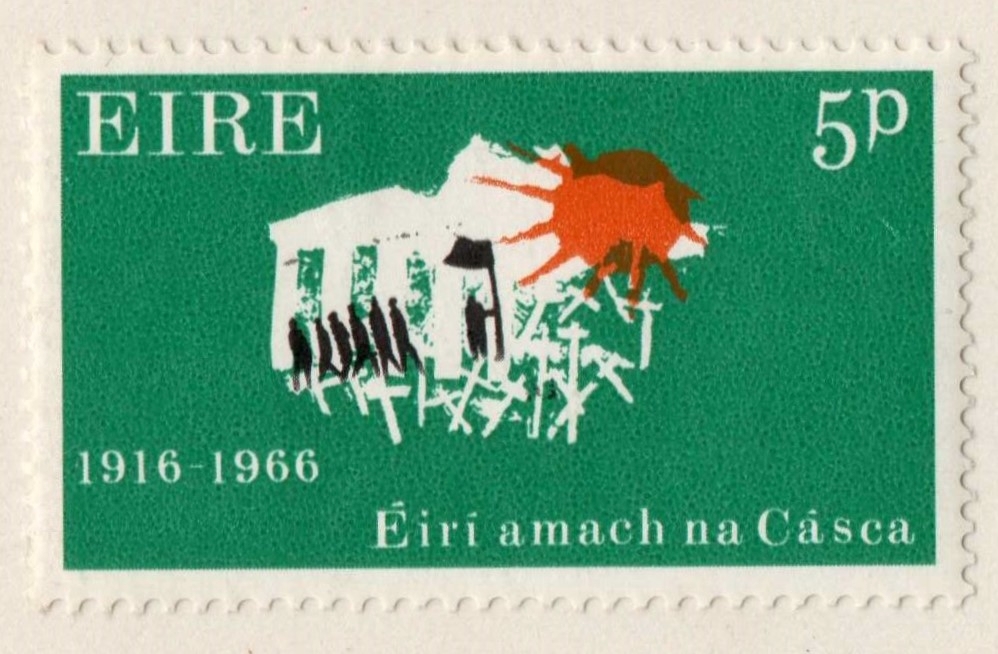
---------------------------------------------------------------------------------------
This is a commemorative from 1941 and the silver jubilee year of the Rising which occurred during the 'Emergency' (aka WWII). What I found interesting was the image of fighting youth. (The Irish is the 'in the name of God and the dead generations...' from the Proclamation)
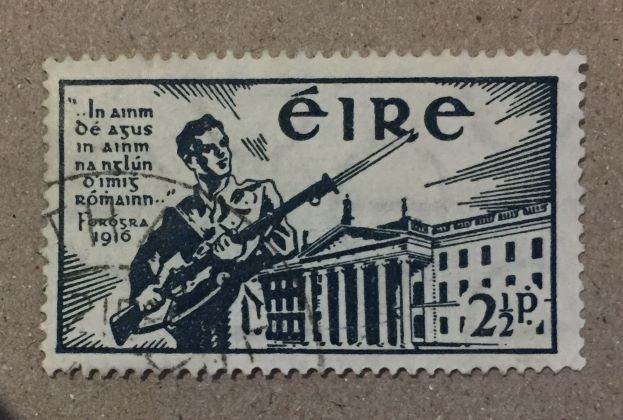
In one of the A111 chapter references by Allison Martin, https://www.historyireland.com/easter-rising-commemorations-in-the-early-irish-state/ the 1941 celebrations are discussed and how, despite being a neutral country the government opted to make a real show of the military in the commemorations.
"De Valera and his administration therefore decided to use the commemoration service in order to project an image of military strength. In reality, the Irish state was militarily and financially unprepared for war. Nevertheless, the impressive military procession had the desired effect: one reporter from the Irish Independent was left with the distinct impression that ‘the nation was prepared’."
I think this political priority really comes across in the stamp design, none of the other commemoratives (there are ones from 1941,1966, 1991, 2006 and 2016) emphasise images of 'battle' like this - a really potent image!
---------------------------------------------------------------------------------------
In 1941 a provisional set of stamps (two and three pence) were also printed and released just before Easter that year, these were standard 'definitive' stamp designs over-printed with the text 'In memory of the Rising 1916' in Irish.
